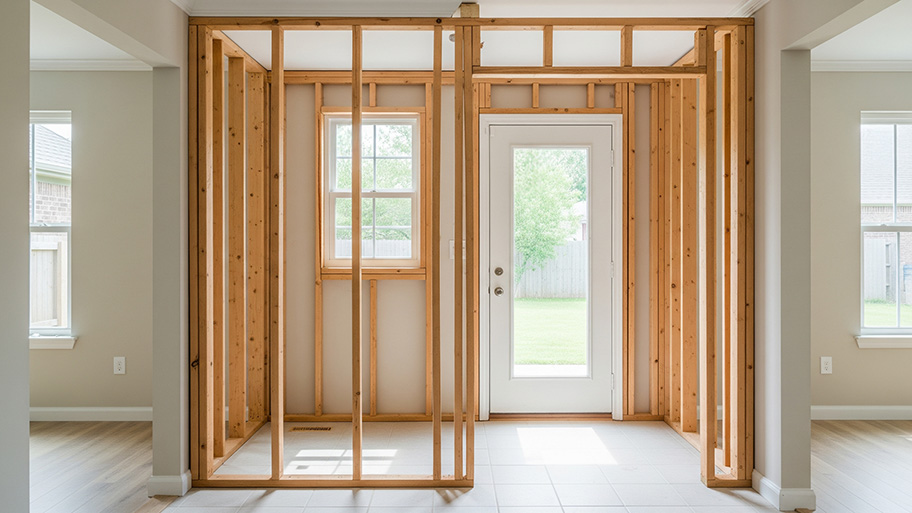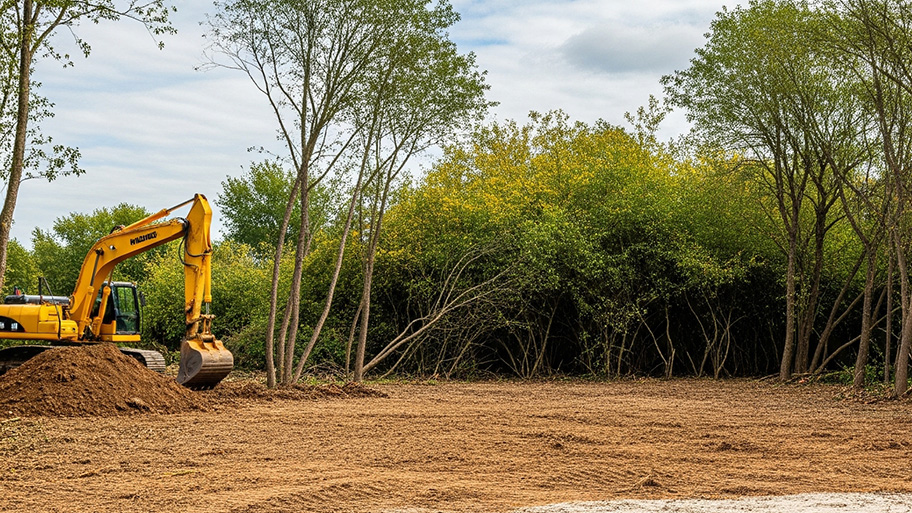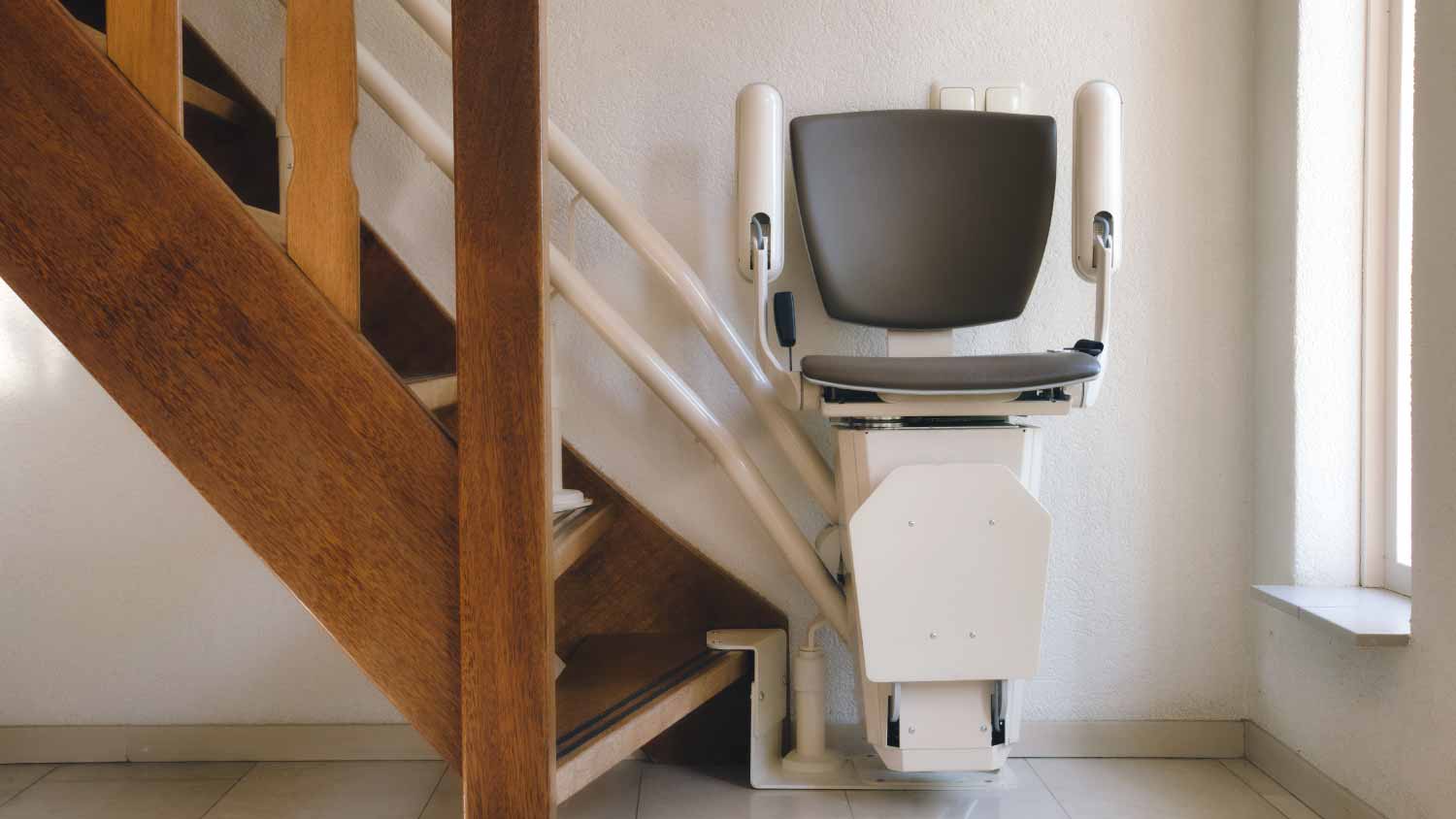
Sometimes, all your home needs is a new wall to make a room or provide an updated function to an existing space. Learn how much it costs to install a new wall.
You can swap out water-damaged wood without setting foot on your roof


You may not notice your soffits, but these unassuming overhangs help keep moisture, mold, and pests out of your roof while ventilating your home and protecting it from damage. That’s why when they start to rot, you need to address the damage quickly. Unlike other roof repairs, soffit replacement can be done on your own in a few simple steps without climbing onto your roof.
Before you start your project, familiarize yourself with each part of the roof you’ll be working on.
Soffit: The underside section of the overhang that runs around the roof of your house. Soffit helps keep out moisture and regulate home temperatures.
Fascia: The protective cover running along the side of your roof’s overhang to make it appear finished, support your shingles, and prevent water damage.
Eave: The entire overhang of a roof, including both the soffit and fascia.
Shingle: Topmost roof covering made up of overlapping rectangular pieces. They are most commonly asphalt, but can also be made of wood, slate, or clay tile.
Shingle Mold: A narrow strip of wood attached to the fascia directly beneath the edge of the shingles.
Flashing: A thin, flat piece of metal installed under the shingles to direct water away from the roof’s openings.
You’ll know your soffit needs to be repaired when you see the following signs of rotting on the underside of your home’s eaves, or roof overhangs.
Cracking and curling under the eaves
Sections of missing wood on a soffit
Hollow sounds when you tap a soffit’s wood
Animals entering your attic
Leaking water or water damage in your attic around the fascia
Running along the outer edge of your roofing shingles will be a narrow piece of shingle mold. This piece sits on top of the fascia, which is the protective cover on the side of your roof overhang. Pry the shingle mold off using a flat bar. If it comes off in one piece without splitting, set it aside so you can reuse it later.

With your flat bar, carefully remove the rotted section of fascia without damaging nearby roofing shingles or flashing. Again, if it remains intact you can set it aside to reuse later. If it splits, you’ll need to cut a new piece of wood with your reciprocating saw that matches the length and thickness of the broken piece. Prime this piece on both sides and let it dry while you work.
Wearing protective gloves, grab the soffit with your hands and pull down to remove it. If you suspect that an animal caused the rotting, keep in mind as you pull down the wood that you may encounter a nest behind it. Measure the gap, then use your saw to cut a new piece of plywood to replace the old soffit.

The rot from your soffit may extend to the rafter behind it. If so, chop out the rotted section of the rafter with your reciprocating saw, then use the saw to cut a replacement piece of pressure-treated lumber to the original rafter’s measurements.
Clamp a piece of 1-inch backing board to the remaining section of the existing rafter. Use a power drill to screw the new piece of lumber to the backing board in place of the piece you removed.
You’ll want to protect the edges of your new plywood soffit from future water damage. To do this, coat both sides and all edges of the new lumber with a waxy sealant.
Use your power drill to screw the new plywood soffit to the underside of the eave. Look for any areas around the installation where water could seep through, then caulk those areas. Allow the caulk to dry completely before moving on to the next step.
Whether you saved the intact fascia from earlier or cut a new piece, slide it into place and attach it to the eave with galvanized nails. Apply a layer of wood putty over each nail hole for protection.
Install your new or existing shingle mold along the top of the fascia you just attached. With that, your soffit repair project is complete!
Roofing projects can be rather time-consuming and risky if you aren’t familiar with the various parts of your roof and the tools needed to repair them. However, if you feel confident in your skills and you already have the tools you need, you can save significantly on the cost of labor with a DIY soffit repair job.
The cost to repair a soffit on your own can vary depending on which tools you already have on hand, but you should expect to spend at least $100 on supplies. DIY soffit board repair can save you $1.50 to $3 per linear foot. Be sure to wear proper footwear and be extremely careful when working on your roof, as incorrectly installed soffits can lead to costly roof damage.
If you don’t feel comfortable doing these repairs on your own, consider hiring a local roofer to handle the job.
Soffit is sometimes made from 1-inch boards of solid wood lumber such as pine, cedar, or redwood, or from plywood. It can also be made from engineered wood or wood composite material.
Soffit rot can have a number of causes. It’s most often a result of moisture damage from faulty gutters, but it can also be caused by harsh weather or animals that have nested inside your roof. Squirrels, birds, and bees can all be commonly found nesting in a home’s soffits.
Soffit rot can also be caused by a roof issue. Look for rotted decking and sheathing above the rotted area to make sure you don't have a bigger issue.
From average costs to expert advice, get all the answers you need to get your job done.

Sometimes, all your home needs is a new wall to make a room or provide an updated function to an existing space. Learn how much it costs to install a new wall.

Home elevator costs depend on the size and type of lift, if it needs retrofitting, and the number of floors. Our guide outlines all residential elevator costs.

Going from an undeveloped plot to your dream home can be expensive. Learn about the cost to develop land and what factors can affect your total.

Have stair lift questions? Before installing or replacing a stair lift, discuss these key questions with your contractor to ensure a smooth and safe project.

Choosing the type of framing for your home isn't a decision to make lightly. Compare metal studs vs. wood studs to find the best base for your house.

To create a comfortable indoor environment, learn how to soundproof a ceiling. We’ll break down the different ways to get it done.